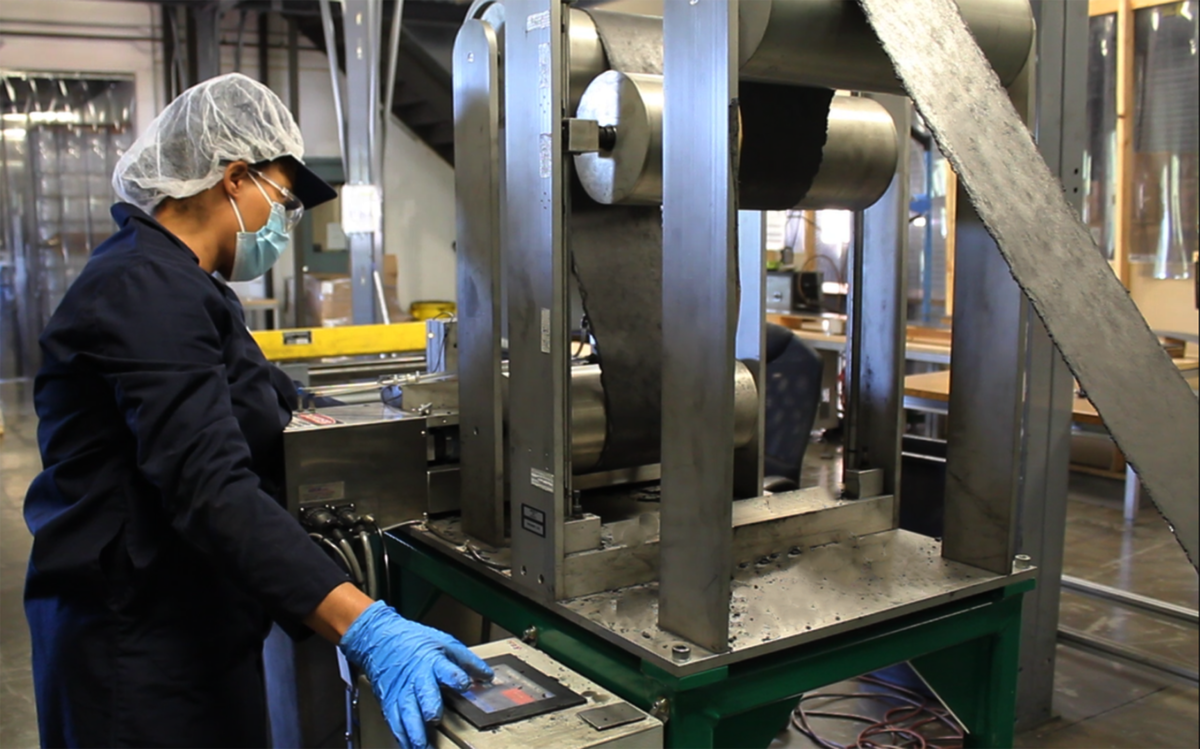With energy storage having an emergence in the latter part of the last decade as a foundational technology that will be absolutely critical to a successful energy transition, the market has seen a lot of variety in storage solutions, especially on the battery front.
On a quest to set themselves apart and find the optimal storage solution, companies have toyed with existing battery chemistries and invented their own. One startup, backed by the Electric Power Research Institute (EPRI), has found an approach that’s been in front of us the whole time.
That company is Urban Electric Power and its technology is alkaline batteries – think AA in a flashlight. Just saying “alkaline” doesn’t tell the full story, however, as Sanjoy Banerjee, CEO and Ann Marie Augustus, VP of operations told pv magazine.

Image: City College of New York
The Urban Electric story began 12 years ago, when the company received an Advanced Research Projects Agency–Energy (ARPA-E) Grant for $6 million to design something for the grid, specifically a storage solution that would be comparable in cost to pumped hydrogen, yet not as geographically exclusive. When looking at battery technologies and chemistries, zinc and manganese dioxide made the most sense, as both were already being widely used for battery cells and their supply chains were well established.
The issue then became recharging, as manganese dioxide and zinc both had high capacities, but their chemical structures would change after a discharge, disabling any hope of a recharge. As Banerjee explained it, the company was able to “freeze” the change by adding “certain doping agents like bismuth and copper,” finally achieving both high capacity and rechargeability.
UEP has since used this innovation to develop modular batteries that can provide backup electricity for personal use, may be installed in a home garage or basement, grouped as part of a commercial microgrid, or installed en masse at grid scale by an electric utility or independent power provider. Augustus also pointed to one advantage that the company believes offers a critical advantage over competing chemistries: the batteries pose no risk of thermal runaway.
The company currently has a manufacturing plant in Pearl River, NY, which you can take a virtual tour of.
This breakthrough is what Banerjee and Augustus believe got the attention of EPRI. Urban Electric Power was the only battery storage company of more than 250 applicants to be accepted into EPRI’s Incubatenergy Labs electric utility mentorship program.
Incubatenergy Labs brings startups and utilities together to crowdsource the demonstration of these innovations and speed the commercialization of promising technologies. Urban Electric will now spend 16 weeks working with utilities including Ameren, the Tennessee Valley Authority, Con Edison, and Duke Energy on demonstration projects.

Image: AIChE
Urban Electric is actively installing one large-scale demonstration project. The installation is at a San Diego State University data center, which needed a backup solution, Augustus said. The center’s previous backup provided about 15 minutes of power, but the center needed two hours. Space was limited, which meant the center couldn’t explore diesel capacity, or the number of racks that would be required with other battery chemistries.
Urban Electric’s chemistry became the solution, because it allowed the center to achieve 2 MWh of storage indoors, with no risk of fire or toxic leaks, and at a lower cost per kilowatt-hour than the center’s owners paid for their previous lead acid battery system. What’s more, the solution was compatible with the existing inverters and racking.
Following this pilot and with the support from the Incubatenergy Labs program, Banerjee and Augustus said that the company is, moving rapidly into commercialization and building out its development pipeline, with the goals of offering a battery system below $50/per kWh in the near future, and ultimately below $20/per kWh.
This content is protected by copyright and may not be reused. If you want to cooperate with us and would like to reuse some of our content, please contact: editors@pv-magazine.com.









$20/per kWh sounds too good to be true but hopefully happens before long.
This is interesting. BTW regular C-D cells can be recharged just only a few times, they say 25x but more like 10x so if this can make them recharge 100s-1,000s of times, this is great.
There are so many couples out there we are going to have a lot of new cell types in the near future.
And that is good as we need a lot of batteries.